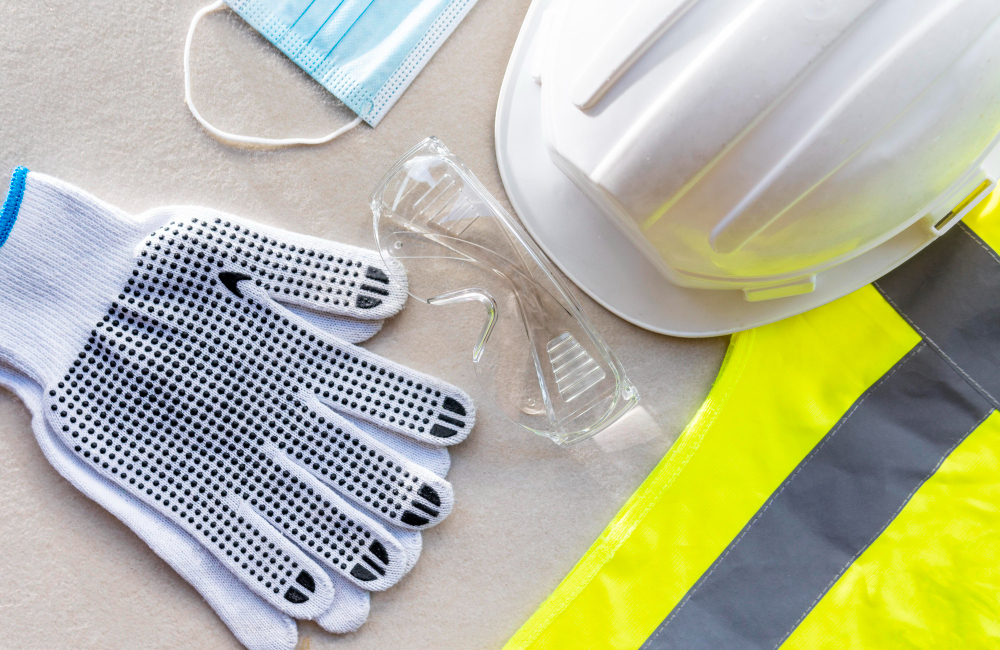
In the jumble of concrete and steel that is the modern construction site, danger lurks around every corner. The chilling testament to this harsh reality is evident in the stark figures reported by the Health and Safety Executive for 2021/2022: a staggering 565,000 workers suffered non-fatal injuries, while 123 souls met their untimely demise in work-related accidents.
Whether it’s the scaffolding in Cambridge of a towering skyscraper or the framework of a humble residence, health and safety must reverberate through every corner of the construction site to keep workers from harm. Yet, managing this critical aspect of the industry can pose some challenges. It demands the arrangement of multiple safeguards against various hazards, all while ensuring that the workforce’s knowledge of safety best practices remains current.
In the ensuing paragraphs, we delve into the vital role of health and safety in construction, decoding the complex hazards that must be laid bare to safeguard lives on a work site.
Why Is Health and Safety Important in Construction?
Health and safety are the custodians standing between life and disaster within the bustling construction workspace. A failure to adhere to laid out safety plans can cause employees and innocent bystanders injury or worse. If not approached with utmost care, the construction site transforms into a hazardous arena for anyone setting foot within its confines.
Several potential hazards, both subtle and overt, affect the construction industry. To mitigate these risks, the vetting of personnel becomes paramount. Many UK companies carry out this due diligence by mandating all site employees carry a CSCS card to certify their workmanship. How much is a CSCS card? Depending on the skill and experience level of the holder, it varies between the £30 to £60 mark. Still, it is an investment worth making.
Common Construction Hazards
- Working at Height:
Accounting for 29% of incidents in 2021-2022 falls from great heights constitute some of a construction site’s most fatal risks. Working at height, whether on scaffolds, cranes, or scissor lifts, demands rigorous training to prevent untimely tragedy. To minimise chances of a catastrophic fall, construction workers should be provided with harnesses, safety rails, and platforms for protection.
- Slips, Trips, and Falls:
Uneven terrain, mud-strewn pathways, and obstacles like heavy machinery create an environment where slips, trips, and falls are rampant. For an antidote to these hazards, you must instil diligence in your workforce by keeping a well-maintained site, rigorous cleaning protocols, and mandating appropriate footwear.
- Moving Objects:
Amidst the hustle and bustle of a construction site, the movement of materials and machinery also presents an ever-looming danger. In the confined spaces of these sites, large vehicles and equipment may inadvertently collide with labourers or heavy objects like bricks, endangering all in their path. Avoiding this peril demands workers are adequately trained and persistently vigilant of their surroundings on a daily basis.
- Noise:
The cacophony of drills and machinery reverberating through the everyday construction site can threaten workers’ hearing long-term. The high-decibel environments of many construction sites can inflict lasting damage to site workers and people living around if they constantly work without protective gear and proper training. To this end, ear protection should be used daily without fail to curb the scourge of noise-induced hearing impairment.
- Electricity:
Often overlooked, the danger of electricity lurks within the confines of every construction environment. The mixture of electrical installations and long cables, which are pivotal to construction, further amplifies this risk. As such, only trained electricians should handle these materials, and hazard awareness training should be made compulsory for all site workers.
The Harsh Reality
Year by year, the construction industry has been a sombre workplace brimming with more work-related injuries than almost any other sector. It falls upon us to recognise the gravity of this situation and invest in health and safety training, ensuring that construction sites align with safety regulations. Failure to do so not only risks life and limb but can lead to costly legal retribution.